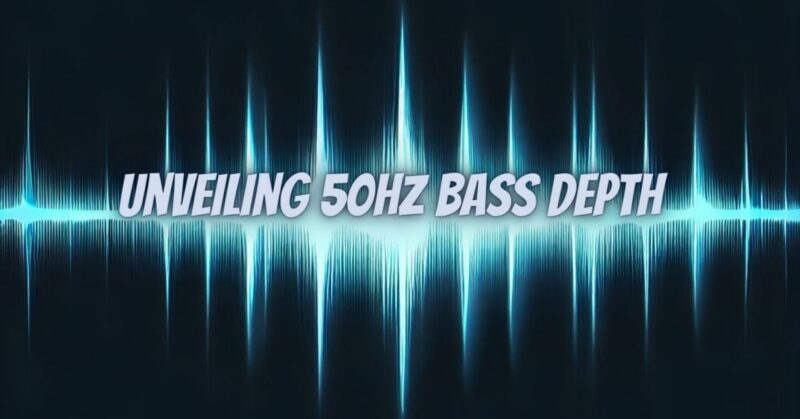In the realm of audio, bass frequencies play a vital role in shaping our auditory experiences. Among the lower registers, 50Hz bass depth emerges as a sonic powerhouse that bridges the gap between the visceral and the melodic. In this article, we will delve into the world of 50Hz bass depth, uncovering its significance in music and soundscapes, its emotional resonance, and the technology behind its production.
Understanding 50Hz Bass Depth
The 50Hz bass depth falls within the sub-bass frequency range, which spans from 20Hz to 60Hz. This frequency range is known for its unique blend of power and musicality. At 50Hz, sound waves oscillate at 50 cycles per second, creating a resonant and impactful auditory experience.
The Significance of 50Hz Bass Depth
- Resonant Power: 50Hz bass depth offers a perfect balance of power and clarity. It provides the foundational rumble and weight in music while remaining distinct and discernible. This balance ensures that 50Hz bass depth doesn’t just shake the room but also enriches the musicality of a composition.
- Musical Versatility: 50Hz bass depth finds its place across a wide range of musical genres. From the throbbing beats of electronic dance music (EDM) to the rich and immersive basslines of rock and hip-hop, this frequency range adds depth and character to various musical styles.
- Emotional Impact: The presence of 50Hz bass depth can evoke a wide spectrum of emotions in listeners. It can create excitement, anticipation, and intensity, making it an invaluable tool for shaping the emotional tone of a musical piece or a cinematic soundtrack.
Production and Playback Considerations
- High-Quality Equipment: Accurate reproduction of 50Hz bass depth requires high-quality audio equipment. Subwoofers and speaker systems designed to handle these frequencies deliver clean and impactful sound.
- Equalization (EQ): Skilled sound engineers use EQ techniques to sculpt the 50Hz bass frequencies, ensuring that they are well-defined without overpowering other elements of the audio mix. Proper EQing is essential for achieving a balanced and dynamic sound.
- Mixing and Arrangement: Musicians and producers strategically arrange instruments and elements to harness the power and musicality of 50Hz bass depth. This includes placing basslines and kick drums in a mix to maximize their impact.
- Compression and Limiting: Compression and limiting techniques are applied to control the dynamic range of 50Hz bass, ensuring that it remains consistent and powerful without causing distortion.
In the world of audio, 50Hz bass depth stands as a cornerstone of sonic richness and emotional resonance. It provides the auditory foundation that elevates music and soundscapes to new heights. Whether it’s the thunderous rhythms of EDM, the driving basslines in hip-hop, or the pulsating energy of rock anthems, 50Hz bass depth enriches our auditory experiences, reminding us of the profound impact of low-frequency sound. As technology and creative innovation continue to evolve, the significance of this frequency range will persist, shaping the soundscapes of the future.


